Masters Thesis: SUPER. Moments of Remarkable, by Richard Clarkson
The objective of Richard Clarkson’s Products of Design Thesis, entitled “Super. Moments of Remarkable,” was to help people feel powerful by allowing them to realize their true potential in the face of seemingly impossible obstacles in life. Richard explored this challenge through experience design and positive-cognitive psychology. Inspired by both a childhood fascination with Superheroes and using cartoons as a an outlet to deal with stress of over-exposure to information as an adult, Richard’s initial research focused on trying to identify and define what Superpowers really are. As the research moved into cognitive psychology, the thesis shifted in perspective from a collection of objects to a platform of experience. This culminated in a one-night event at a Manhattan-based gallery space, which took participants on a journey through seven different Superpower simulations.
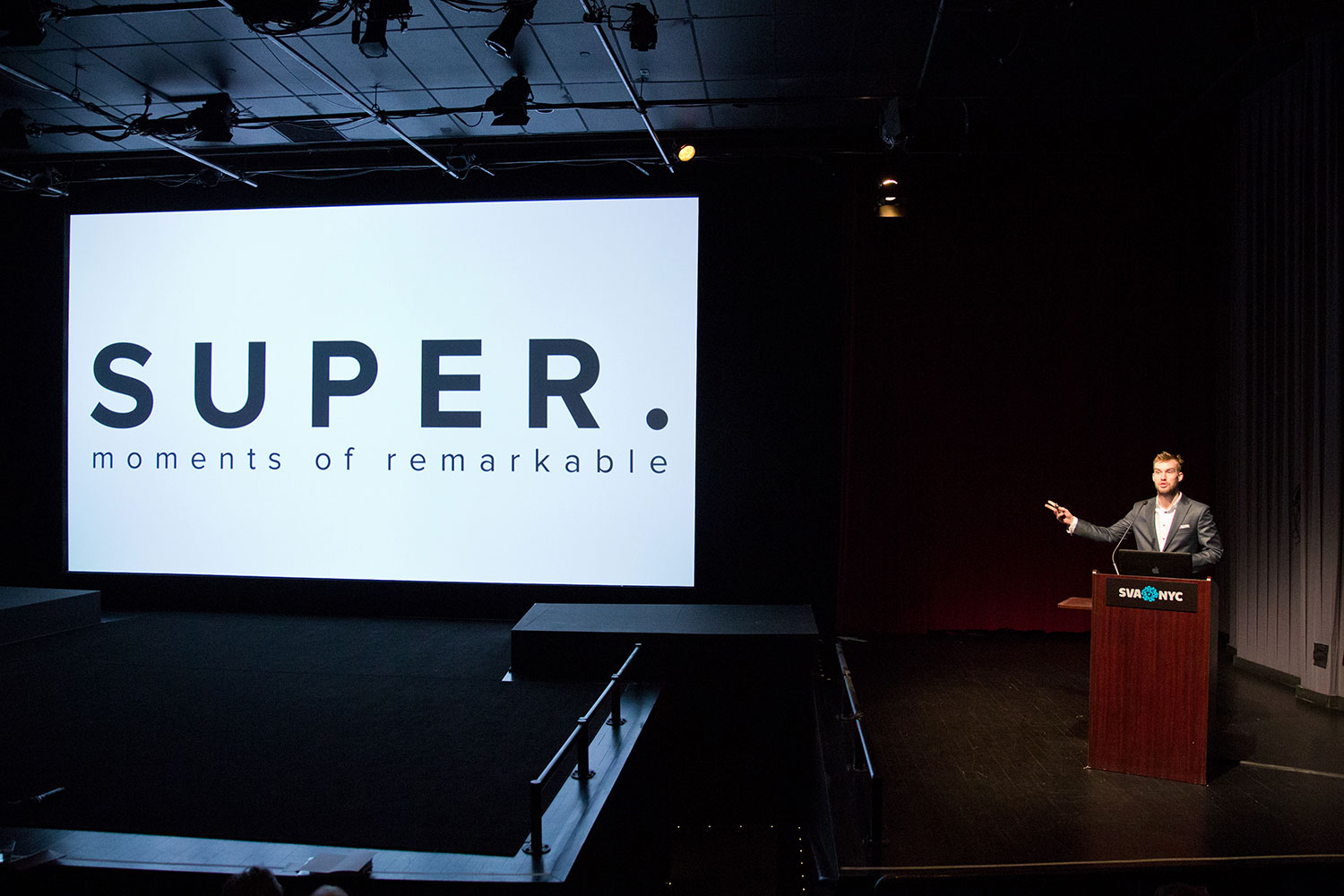
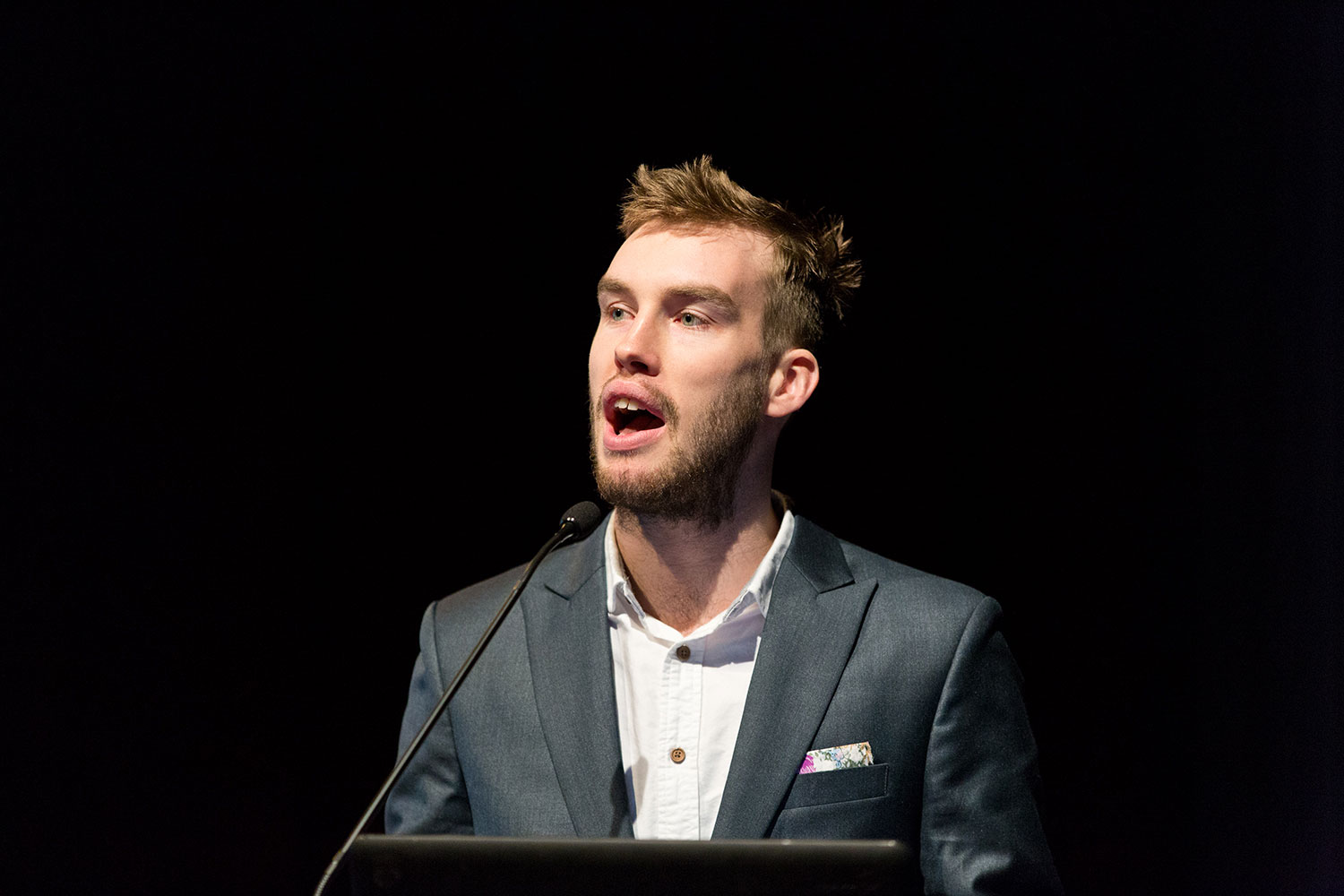
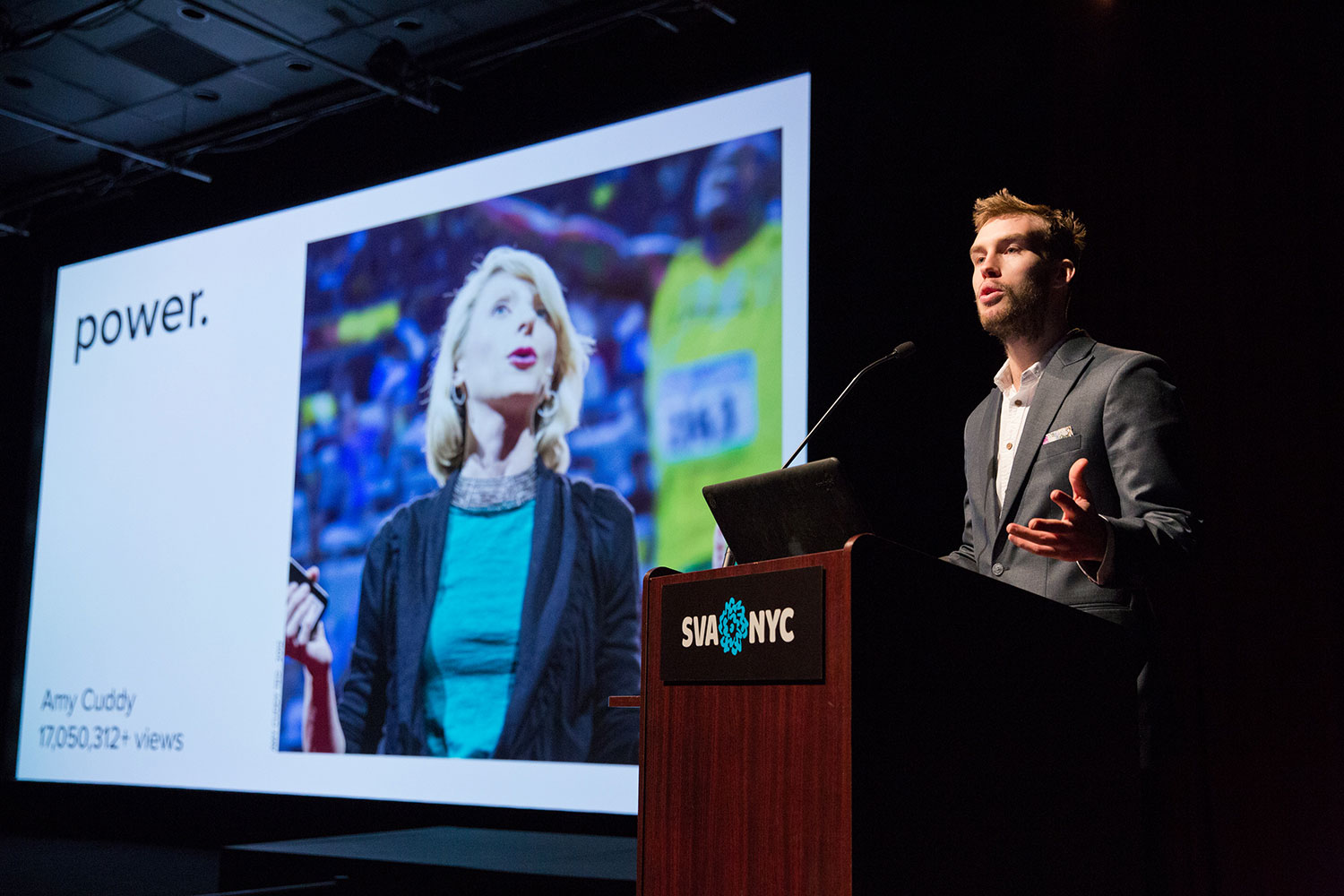
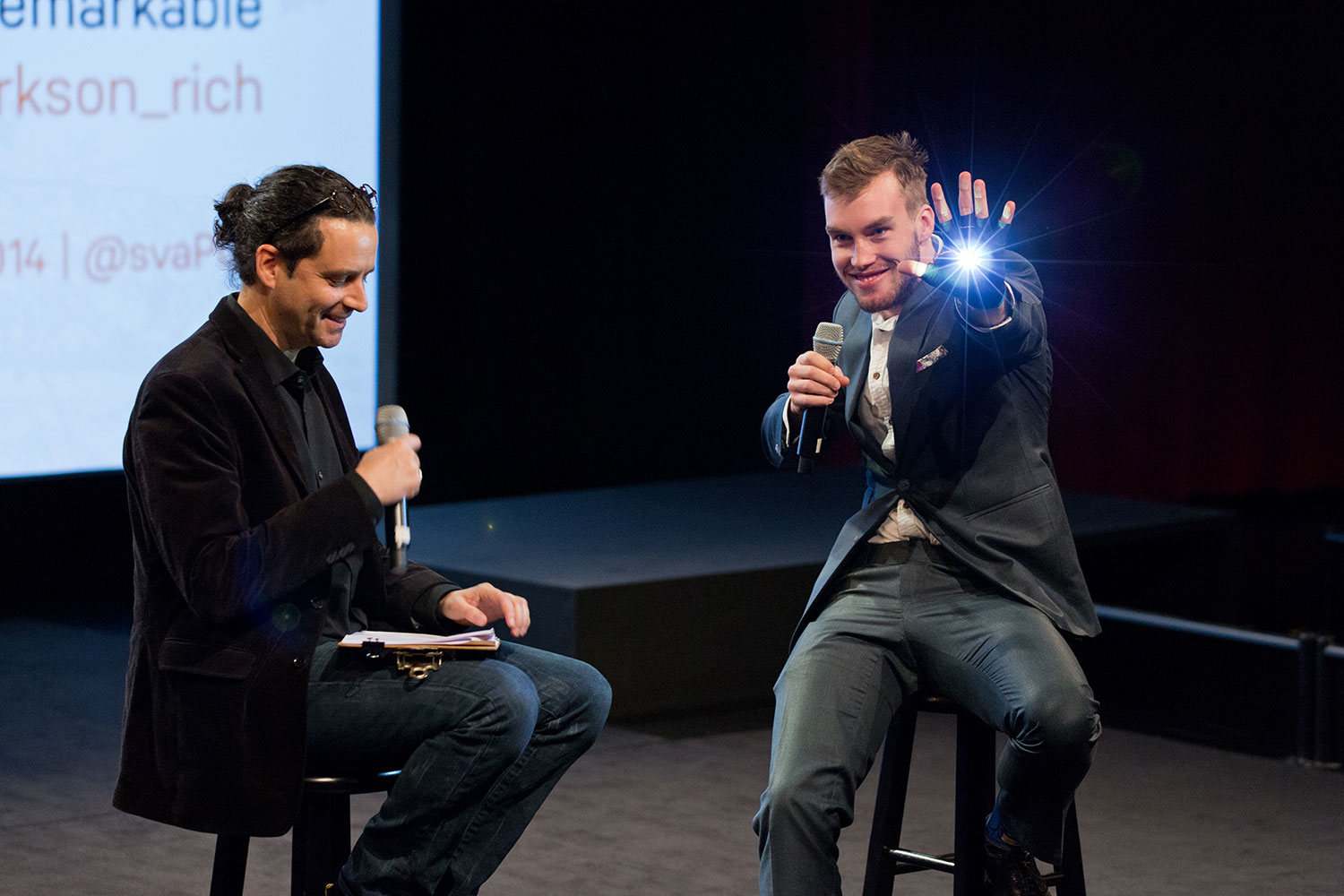
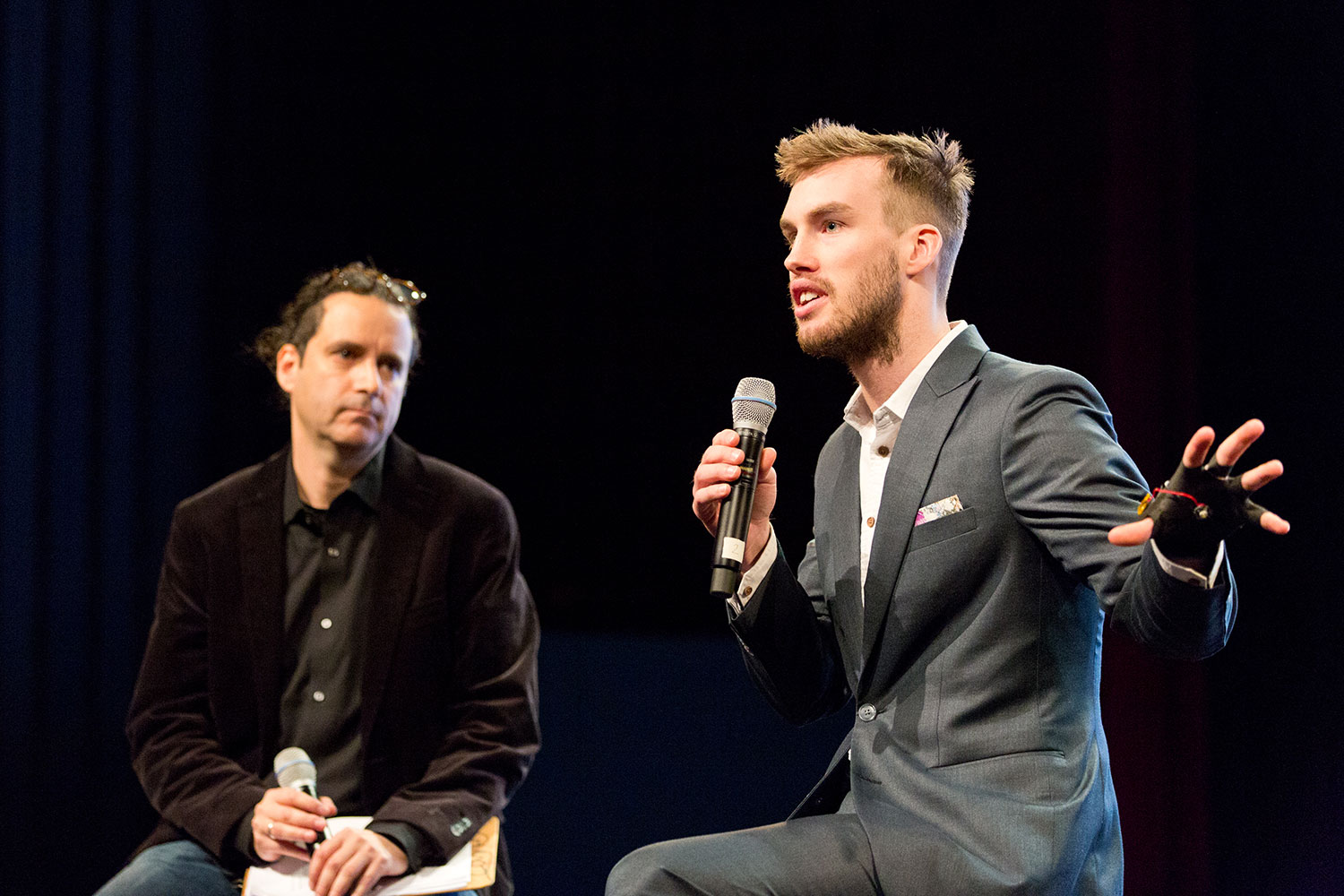
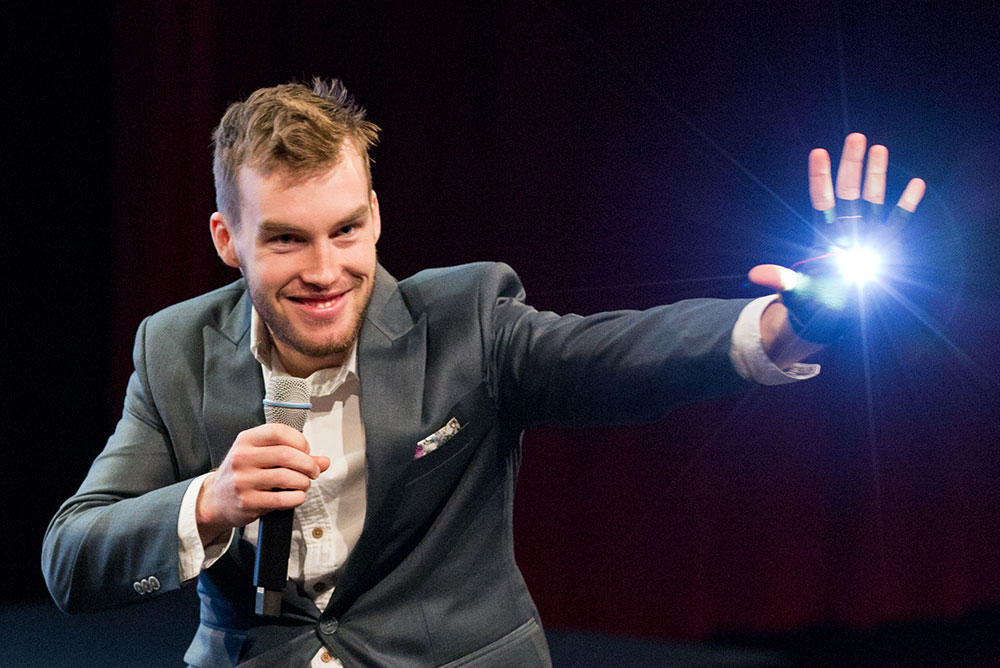
Early research on Superpowers was comprised of conducting surveys of a range of participants in order to find out what they considered to be their superpower, their superhero, and their supervillain. These conversations were invaluable in identifying this thinking space—where people could have conversations about very intimate aspects of their lives without feeling vulnerable. A key insight into the topic came from a conversation with design thinker John Thackara, who encouraged Richard to split the terms ‘Super’ and ‘Power’ into two separate definitions. Thakara helped to identify ‘Super’ as an extraordinary external experience, and ‘Power’ as internal latent strengths. These ideas developed into a collection of interactive objects based on a range of superhero poses, gestures and actions. These objects included a password activated lamp, a flight simulator, a color changing chair, an ‘Iron Man’ style light glove, and a power-pose activated bulb.
Through user research, Richard found the physical objects to be effective interactive stimuli for the desired thought patterns, but identified a lack of understanding behind the psychology of these objects and the participants’ reactions to them. A profound link was discovered in Amy Cuddy’s popular TED talk, where she examines the psychological link between a Super experience and a measurable bio-chemical change in the body. This was pivotal, providing scientific evidence and validations of the findings discovered in Richard’s initial experiential object experiments. Further conversations with practicing and research psychologists worldwide—including Josh Ackerman from MIT, Scott Barry Kuffman from NYU, and Peggy Kern from UPEN—helped to identify the underlying theme of ‘character strengths’ and their involvement in the origins of superpower narratives. Further research into the work of those such as Angela Duckworth and Martin Seligman identify and define character strengths as traits that exist within all of us, often without our conscious acknowledgement. Duckworth also alludes to the fact that these can be leveraged for a more rewarding and more fulfilled life.
In order to further explore the concept of character strengths, Richard looked towards exhibition design, proposing a night of experiential art/design as the final offering for his thesis work. The event was to have seven Superpower simulations for participants to work their way through—in the context of a Superhero Gym. Each simulation aimed to reveal a different character strength within each individual, where participants brought their own unique set of skills, interpretations and values to the experience as a whole, and where their journey through the simulations was uniquely tailored. For instance, the flight simulator emphasized a feeling of curiosity; of truly wondering what it would be like to explore the world from the skies. It allowed people a glimpse at the feeling of flight that inspires the curiosity character strength. The aspect that made the experience unique was the ‘second level’ of the simulations, which were activated when the character strength reflected in the simulation aligned with the character strength the participant most associated with in the beginning of the journey.
On Friday 25th April 2014 guests, general public and participants were guided through the very first Super performance, with actors playing roles drawn from Joseph Campbell’s Heroes Journey structure. The final outcome and takeaway from the performance was a membership application packet for the ‘Superhero Gym’ they had just toured. This packet included information about the specific power that had been revealed to them through the experience.
In the end, the event helped participants realize their own true potential; that they possessed unique superpowers that could aid them in challenging life’s larger obstacles, and that they could use the understanding of their own power to steer towards the moments in life that make it so incredible to be alive.
See more of Richard’s work at his website www.richardclarkson.com and email him at rc@richardclarkson.com. Also, check out Richard’s thesis website and blog.



















